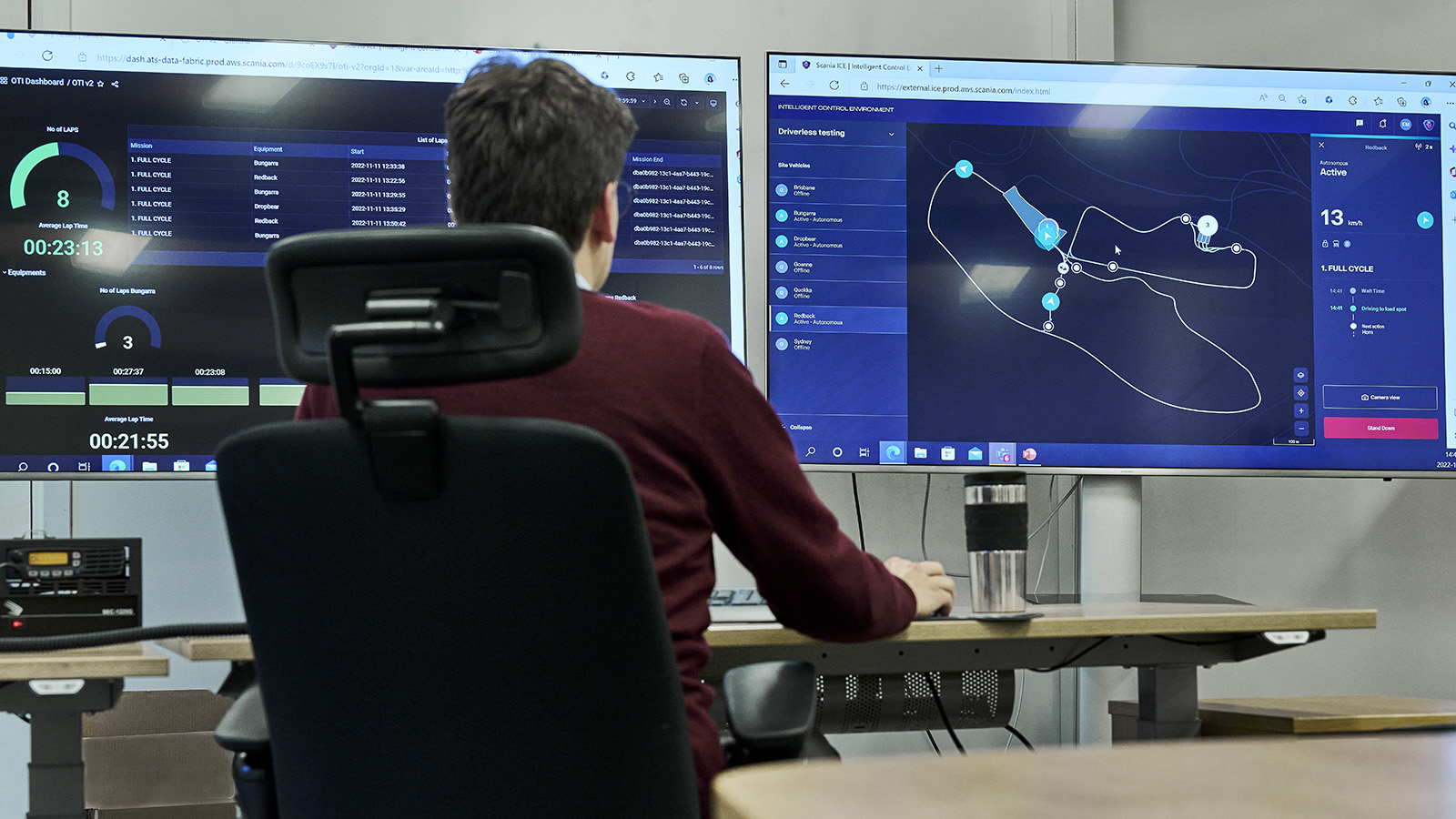STIFF – System Transformation for Uptime for Driverless vehicles
A project studying fault-handling systems in driverless transport systems. The focus is on how to address the several critical aspects of removing the driver that will affect the measurement of the vehicle's functional state.

Background
Creating a transport system with driverless trucks and efficiency requires vehicles that are reliable and manage to perform their tasks according to plan. The word ”uptime” is often used in the truck industry and can be defined as a measurement of the vehicle's functional state. It can be computed by dividing the usage time of a vehicle by its planned usage time. The fault-handling system is a critical component in achieving high uptime.
A noticeable change with introducing driverless vehicles is that the driver is no longer present onboard the vehicles. In the previous Vinnova project uptime for driverless vehicles (TIFF), we identified several critical aspects of removing the driver that will affect uptime. There is no longer a human onboard responsible for the vehicle's health and can detect vehicle faults and make decisions regarding suitable actions. These aspects will influence the fault-handling system and the needed support to ensure a high level of uptime in a driverless transport system.
About the project
In this project, the fault-handling system is defined as the system that ensures vehicle reliability and offers diagnosis, maintenance, and repair of vehicles. From a fault-handling perspective, securing uptime implies providing suitable support when vehicle faults occur so that the vehicles can perform their tasks according to plan.
In the project, we study two types of changes in the fault-handling system that can remedy these problems:
- Changed roles and interactions from a socio-technical perspective
- Intelligent and automated decision support and decision methods.
There is little knowledge regarding how to manage changes, or transformations, of complex socio-technical systems, and there is a need for a new understanding of how to work with transformations to achieve desired effects and avoid unwanted effects. In this project, we study the transformation of the fault-handling system to gain new knowledge in this research area. We combine concepts and methods from the system thinking field and design thinking – an approach we call ”systemic design”. The purpose is to enable deeper involvement and management of complexity.
The project addresses three research questions:
- How can transformations of complex socio-technical systems (the fault-handling system) be achieved with the support of systemic design?
- How can uptime be maximized in a transportation system with driverless vehicles by the design of tools, technical systems, and services?
- How can intelligent decision support systems be designed to contribute to maximized uptime in the transportation system?
Partners
The project is a collaboration between academia and industry, where much of the research activities will occur at Scania.

